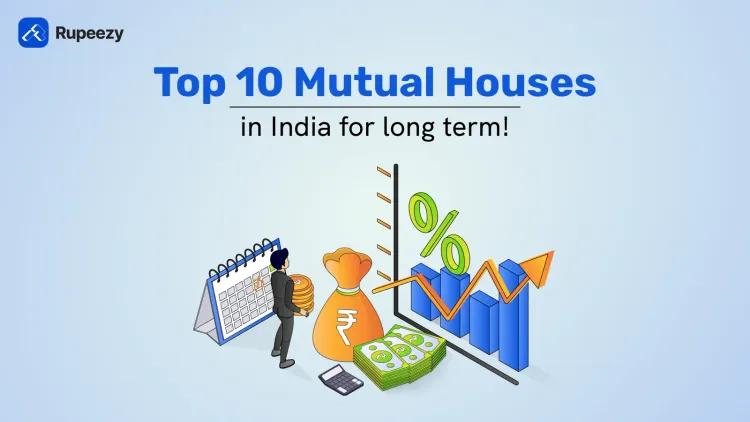PMS vs Mutual Fund: Key Differences Explained


00:00 / 00:00
Managing money is not an easy task. With so many options for investment available, it can be quite confusing to select the one that best suits your needs. Among these, PMS and mutual funds stand two most prominent choices.
Mutual funds are well-known for their accessibility and regulated structure. On the other hand, PMS, which is Portfolio Management Service,s offers a more personalized and flexible approach. Selecting between PMS vs mutual fund is about level of control, customization, and investment commitment.
For example, mutual funds are ideal even for small investors and are often used for SIPs or lumpsum investment. PMS, on the other hand, usually requires a higher entry threshold and so is more often opted for the HNIs.
Hence, understanding the difference between PMS and mutual funds is very important. So, let us explore the same in the guide here.
What Is PMS?
PMS stands for Portfolio Management Services. It is a professional investment management service. This is offered to individuals with high investable capital. Under PMS, a qualified portfolio manager handles your investments. This can be in equities, fixed income, or other securities, based on your financial goals and risk profile.
Unlike pooled investment methods, PMS creates a unique portfolio for each client. The manager actively monitors and adjusts the portfolio. The aim is to make the most of market opportunities. This service is ideal for investors who want a focused and customized investment strategy. This helps you with regular performance updates and a higher level of involvement in their financial planning.
Key Features of PMS
Portfolio Management Services come with several unique features that differentiate them from standard investment options:
Customised Portfolios: Each investor gets a dedicated portfolio built around their financial goals, risk tolerance, and investment preferences.
Professional Management: A qualified portfolio manager actively manages your investments, making timely decisions to optimize returns.
Direct Ownership: You hold the securities directly in your name, giving you better visibility and control over each asset.
Higher Investment Threshold: PMS typically requires a minimum investment of Rs. 50 lakhs, making it suitable for high-net-worth individuals.
Lump Sum Investment Model: PMS operates through a one-time and large capital deployment. This is done when you start and there is no SIP method here.
Detailed Reporting: You receive regular, in-depth reports with insights on portfolio performance, transactions, and asset allocation.
Tax Efficiency: Since each investor’s portfolio is separate, tax is calculated individually, allowing for personalised tax planning.
Types of PMS
Portfolio Management Services are broadly classified into three types, based on how much control the investor wants to retain:
1. Discretionary PMS
In this type, the portfolio manager takes all investment decisions. It is done on your behalf. They choose what to buy, when to sell, and how to rebalance the portfolio. You don’t need to approve each transaction. This makes it a hands-off approach.
2. Non-Discretionary PMS
Here, the manager will share the top investment ideas with the investor. Now, the final call remains with you. No action is taken without your approval. This type suits investors who want expert guidance to a certain extent. They still prefer to stay involved in the decision-making process.
3. Advisory PMS
Now, you can say this is somewhere in between. The manager only provides research-based recommendations. You handle execution independently. The entire working remains with the investor. This is ideal for investors who want professional advice only. You will have complete control of the portfolio.
What Is a Mutual Fund?
A mutual fund is also known as MF. This is one of the finest investment options if you are starting out. This investment pool collects money from various investors. Now, the money collected is invested properly in various assets. This can be stocks, bonds, or other securities.
It is managed by a professional fund manager. These are the experts who make buying and selling decisions on behalf of all investors. The investment is allowed in lumpsum or SIP format.
Each investor owns units of the fund. This is based on the amount of money that an investor puts in the pool. Based on that, the investor earns a return over time. This makes them low-cost and safer choices as compared to the direct stocks. This helps in long-term wealth creation.
Key Features of Mutual Funds
Mutual funds offer a mix of simplicity, accessibility, and professional management, making them a popular choice for a wide range of investors. Here are some of the key features that define mutual fund investments:
Diversification: Mutual funds invest across various sectors and instruments, helping reduce risk.
Professional Management: A qualified fund manager handles all investment decisions using market research and strategy.
Low Entry Barrier: You can start investing with small amounts, often as low as Rs. 500, through SIPs.
Liquidity: Most mutual funds (except ELSS or close-ended ones) allow easy entry and exit.
Regulated Structure: Mutual funds are monitored by SEBI, ensuring transparency and investor protection.
SIP and Lump Sum Options: Investors can choose between systematic monthly investments or a one-time lump sum investment.
Wide Range of Choices: Equity, debt, hybrid, index funds – mutual funds offer options for every risk appetite.
Types of Mutual Funds
Mutual funds come in various categories, depending on where they invest and how they are managed. Understanding the types can help you choose the right one based on your goals and risk comfort.
1. Equity Mutual Funds
These invest mainly in shares of companies. They offer high growth potential but also carry higher market risk. Best suited for long-term investors.
2. Debt Mutual Funds
These invest in fixed-income instruments like bonds, treasury bills, and corporate debt. They aim for steady returns with lower risk, ideal for conservative investors.
3. Hybrid Mutual Funds
These funds invest in a mix of equity and debt, offering a balance between risk and return. Suitable for moderate risk-takers.
4. Index Funds
Index Funds are passively managed funds that mirror the performance of a market index like Nifty or Sensex. They have lower costs and follow a buy-and-hold approach.
5. ELSS (Equity Linked Savings Scheme)
These are tax-saving mutual funds under Section 80C with a 3-year lock-in period. They invest mostly in equities.
6. Sector and Thematic Funds
These focus on specific sectors like pharma or themes like ESG. They are higher risk as performance depends on one sector or trend.
PMS vs Mutual Funds
Now that you know about PMS and mutual funds, you need to explore the difference between them. So, here is the PMS vs MF table that will share the highlights of the most common difference points.
Feature | PMS (Portfolio Management Services) | Mutual Funds |
Target Investor | High-net-worth individuals (HNIs) | Broad investor base: retail, HNIs, institutions |
Minimum Investment | Rs. 50 lakhs (as per SEBI regulations) | As low as Rs. 500 |
Customization | Highly personalised portfolios based on individual goals and risk preferences | Not customizable; same portfolio for all investors in a scheme |
Ownership | Direct ownership of underlying securities | Indirect ownership through fund units |
Management Style | Actively managed with higher concentration; managed by dedicated portfolio manager | Can be actively or passively managed (e. g. , index funds) |
Diversification | Lower diversification; portfolios may be concentrated | Higher diversification across sectors and instruments |
Fees | Higher fees: includes management, performance, brokerage, custodial charges | Lower fees: mainly expense ratio (0. 5%–2. 5%) and nominal transaction fees |
Transparency | High: detailed, investor-specific reporting (often real-time) | Standardized monthly or quarterly disclosures accessible to all |
Control | Greater control in non-discretionary PMS (investor approves trades) | No control; fund manager takes all investment decisions |
Liquidity | Moderate to low; exit may involve lock-in or processing delays | High liquidity; units can be redeemed daily at NAV |
Taxation | Treated like direct stock investments; taxed individually | Taxed at scheme level; investor pays tax on redemptions or dividends |
Regulation | Regulated by SEBI with mandatory disclosures | Highly regulated by SEBI with strict compliance and reporting norms |
Reporting & Communication | Tailored and frequent updates; often investor-specific | Periodic and standard reports: fact sheets, statements, annual updates |
Factors to Consider Before Investing in PMS
Portfolio Management Services offer tailored solutions, but they come with specific expectations. Here’s what you need to evaluate:
Requires a minimum investment of Rs. 50 lakhs, making it suitable for HNIs.
Portfolios can be concentrated, which increases both return potential and risk.
Offers high customisation based on your financial goals and preferences.
In non-discretionary plans, you can approve or reject individual trades.
Charges are higher, often including management fees, performance fees, brokerage, and custodian costs.
Provides detailed, investor-specific reporting with frequent updates.
Tax is calculated individually on each gain and dividend, like direct stock ownership.
Liquidity can be limited, with possible lock-in periods or delayed exits.
Regulated by SEBI but with more flexible compliance and disclosure norms.
Factors to Consider Before Investing in Mutual Funds
Mutual funds are widely accessible and come in many variants. Here’s what you should consider before investing:
You can start with as little as Rs. 500 through SIPs or lump sum investments.
Offers broad diversification across assets, reducing overall risk.
All investment decisions are made by the fund manager; no personal involvement.
Cost-effective with a low expense ratio and minimal exit or transaction fees.
Provides standardised monthly or quarterly reports and fund fact sheets.
Tax depends on fund type (equity or debt) and is paid only at redemption or payout.
Highly liquid, like most open-ended funds, allow daily redemptions at NAV.
Strongly regulated by SEBI with transparent compliance and investor safeguards.
Conclusion
The choice between PMS and mutual funds depends on your investment style, risk tolerance, and capital.
While PMS offers a tailored approach with direct ownership, it suits investors with higher capital and a desire for portfolio control. Mutual funds, on the other hand, are ideal for those looking for diversification, lower costs, and ease of access.
Still unsure about PMS vs mutual fund and what fits your goals best?
Explore smarter investment options on Rupeezy and make informed choices with expert guidance.
FAQs
Q1. What is PMS in mutual fund terms?
PMS, or Portfolio Management Services, is a personalized investment service where your portfolio is managed separately based on your goals and risk profile. Unlike mutual funds, PMS does not pool money. You own individual stocks and have more control. It’s often seen as a premium service designed for larger portfolios, typically above Rs. 50 lakhs.
Q2. How does PMS differ from mutual funds?
The key difference lies in structure and control. In PMS, your portfolio is uniquely managed with direct stock ownership. In mutual funds, your money is pooled with others, and you own units, not stocks. PMS is more flexible and transparent, while mutual funds are cost-effective and suitable for smaller investments.
Q3. Who should invest in PMS instead of mutual funds?
PMS is suitable for high-net-worth investors who want tailored strategies, real-time reporting, and more involvement in how their money is managed. If you have long-term goals and can commit at least Rs. 50 lakhs, PMS can offer deeper customisation than mutual funds.
Q4. Are PMS mutual fund returns better than regular mutual funds?
Not always. PMS portfolios may outperform in some market conditions due to concentrated bets and active management. But that also means higher risk. Mutual funds offer diversification, which cushions against volatility. Performance depends on the manager’s skill, strategy, and market timing in both cases.
Q5. Is PMS in mutual fund space regulated by SEBI?
Yes, PMS is regulated by SEBI just like mutual funds. However, mutual funds follow stricter standardised norms, while PMS has more flexibility in reporting and strategy. SEBI mandates a minimum investment of Rs. 50 lakhs for PMS and ensures transparency through periodic disclosures.
The content on this blog is for educational purposes only and should not be considered investment advice. While we strive for accuracy, some information may contain errors or delays in updates.
Mentions of stocks or investment products are solely for informational purposes and do not constitute recommendations. Investors should conduct their own research before making any decisions.
Investing in financial markets are subject to market risks, and past performance does not guarantee future results. It is advisable to consult a qualified financial professional, review official documents, and verify information independently before making investment decisions.

All Category









